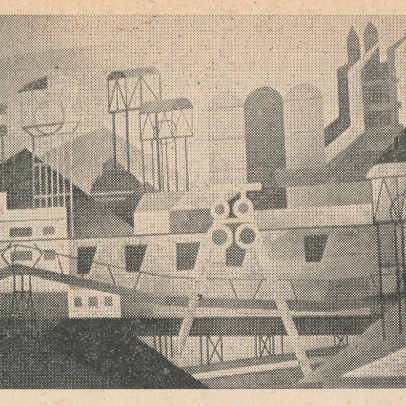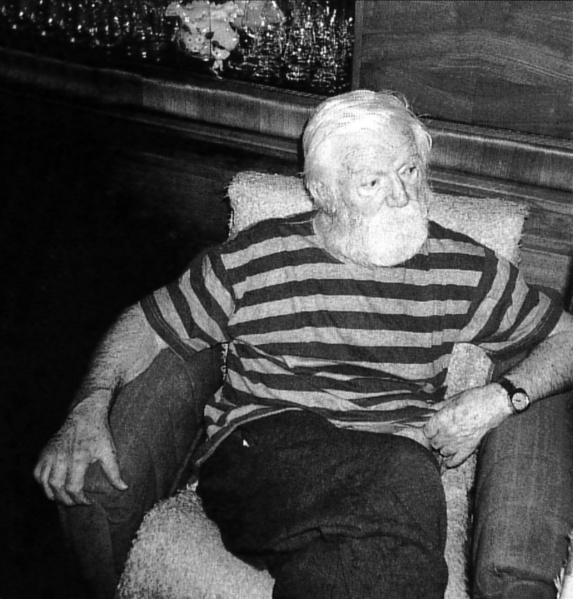Name: Ostrava in the Day and Ostrava at Night
Author: Josef Kolář
Dating: 1960–1961
Location: in the former smoking room of the Vesmír cinema
Execution: a decorative painting of two walls using latex secco-fresco technique, 8 m2 in size
OSTRAVA INVISIBLE
The mural in the former smoking room of the Vesmír cinema in Moravian Ostrava is included among the invisible works of art in the University collection. There were actually two paintings – one representing the stylized image of Ostrava in the daylight, the other (on the opposite wall) showing the city at night. The painter Josef Kolář (1913–2004) created it between 1960 and 1961 when the cinema was undergoing a reconstruction designed by the Brno architect Lubor Lacina (1920–1988). The work was thus not created directly for the VŠB – Technical University of Ostrava, which has owned the Vesmír cinema only since 2003, although the silhouette of an industrial city full of mine hoist frames, ironworks, and slag heaps could suggest it. There is only one known (and low-quality) black-and-white photograph that serves to infer the appearance of the painting, and it only reveals the theme (Ostrava in the Day) and the technique characterized by a summary stylization with an imaginative approach and a certain level of decorativism.
Whether the murals are still hidden under some newer layers is uncertain. As early as in 1966, the author himself drew attention to a poor state of art decoration and decided to adjust it to fit the functions of the room. What he meant by it, and whether he did so or not, we do not know. The future fate of these murals, art value of which was appreciated in 1962 even by an art historian Petr Holý, is unknown. It is not even clear now which of the cinema rooms actually served as the smoking room. Finding out more information about the form and fate of the work will be the subject of research in the future.

